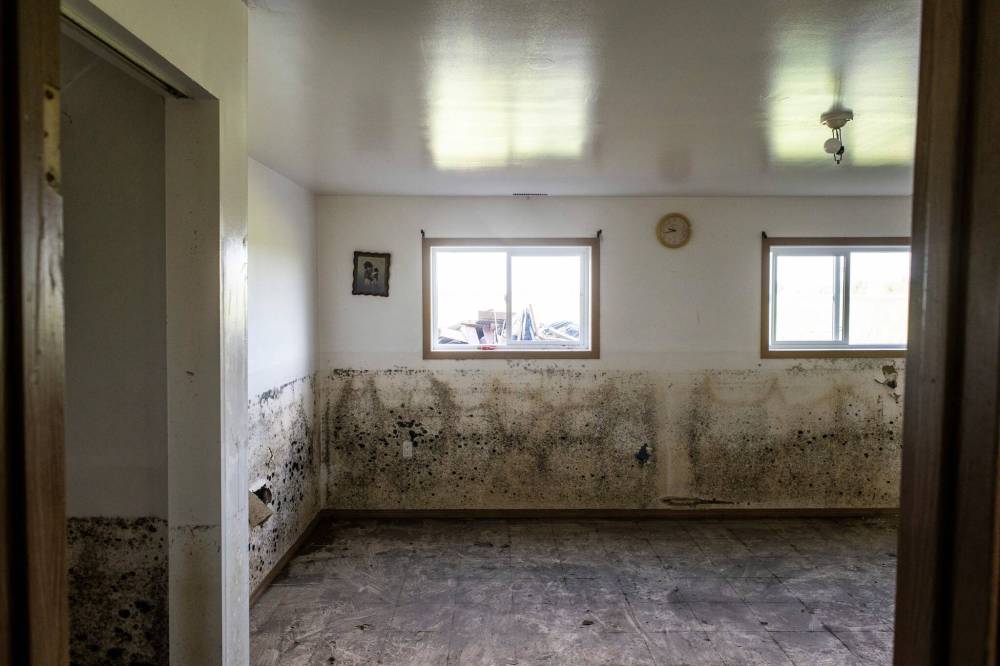Peguis flood relief requires urgent attention
Read this article for free:
or
Already have an account? Log in here »
To continue reading, please subscribe:
Monthly Digital Subscription
$0 for the first 4 weeks*
- Enjoy unlimited reading on winnipegfreepress.com
- Read the E-Edition, our digital replica newspaper
- Access News Break, our award-winning app
- Play interactive puzzles
*No charge for 4 weeks then price increases to the regular rate of $19.00 plus GST every four weeks. Offer available to new and qualified returning subscribers only. Cancel any time.
Monthly Digital Subscription
$4.75/week*
- Enjoy unlimited reading on winnipegfreepress.com
- Read the E-Edition, our digital replica newspaper
- Access News Break, our award-winning app
- Play interactive puzzles
*Billed as $19 plus GST every four weeks. Cancel any time.
To continue reading, please subscribe:
Add Free Press access to your Brandon Sun subscription for only an additional
$1 for the first 4 weeks*
*Your next subscription payment will increase by $1.00 and you will be charged $16.99 plus GST for four weeks. After four weeks, your payment will increase to $23.99 plus GST every four weeks.
Read unlimited articles for free today:
or
Already have an account? Log in here »
Hey there, time traveller!
This article was published 31/08/2022 (1194 days ago), so information in it may no longer be current.
Flood protection for Peguis and Fisher River First Nations will require contributions from many parties. The federal and Manitoba governments will have to pony up for construction costs, but land users upstream and downstream from the Interlake district may also have a role to play.
The flood waters that routinely inundate the two Interlake First Nations flow from the Assiniboine River through the Portage Diversion, Lake Manitoba and the Interlake rivers into Lake Winnipeg and eventually north to Hudson Bay. A major change in drainage through Peguis and Fisher River may therefore affect a wide swath of Manitoba.
The human reality of this drainage system is that hundreds of Peguis residents have to leave the reserve every wet spring and take refuge in Winnipeg hotels. The frequent disruption to the lives of affected families is beyond anything a community should have to endure.
Canada imposed this recurring misfortune upon Peguis people. In 1907, Canada kicked them off their reserve near Selkirk for the benefit of European settlers and sent them to live on the flood-prone land in the Interlake where their descendants have lived ever since.
David Lipnowski / The Canadian Press files Hundreds of Peguis residents have to leave the reserve every wet spring and take refuge in Winnipeg hotels..
In later decades, Manitoba improved drainage of land in the Assiniboine basin for the benefit of landowners and opened the Portage Diversion to direct Assiniboine flood waters into Lake Manitoba. The flooding problem was “solved” by moving it downstream. Peguis residents have been enduring the results ever since. Many have been living in flood-induced exile since this year’s spring thaw and freshet.
Winnipeg knows the importance of well-designed flood defences. The Winnipeg Floodway, built in the 1960s and expanded in the early years of this century, allowed the city’s growth to resume after the 1950 flood and saved Winnipeg from flood devastation at least six times since then.
The floodway provides an alternate channel that takes floodwaters around the city. Without the floodway, that water would flow through the streets and sewers of the city, making evacuation necessary. The floodway inundates low-lying land immediately upstream from its St. Norbert inlet but does not otherwise harm land outside the city.
Improved flood defences for Peguis should likewise be designed to protect Peguis land without merely transferring the problem to someone else’s land. Some benefit may, however, be achieved by restoring wetlands in western Manitoba or in Saskatchewan and retaining spring runoff that would otherwise quickly drive Peguis people from their homes.
Recurrent flooding at Peguis is an obvious injury inflicted upon Indigenous people by Canada in the era of European settlement – and continuing from that day to this. A remedy for that injury must be provided as a small step forward in the journey of reconciliation between Canada and its Indigenous people.
Aaron Vincent Elkaim / The Narwhal files
The work will be expensive, but the benefit already enjoyed by settlers who occupied the former Peguis lands at Selkirk should also be considered. Peguis people were dumped on land in the Interlake and flood waters were channelled over the same land at the expense of the people who lived there.
Peguis people have been paying the price for a century and more. Their forced contribution to the welfare of others should be taken into account when the bill for their flood defences falls due.
In this context, the federal and Manitoba governments should urgently improve Peguis flood defences. They should recognize the shame Peguis floods bring upon Canada and Manitoba. They should start digging retention ponds and raising dikes as quickly as possible.








